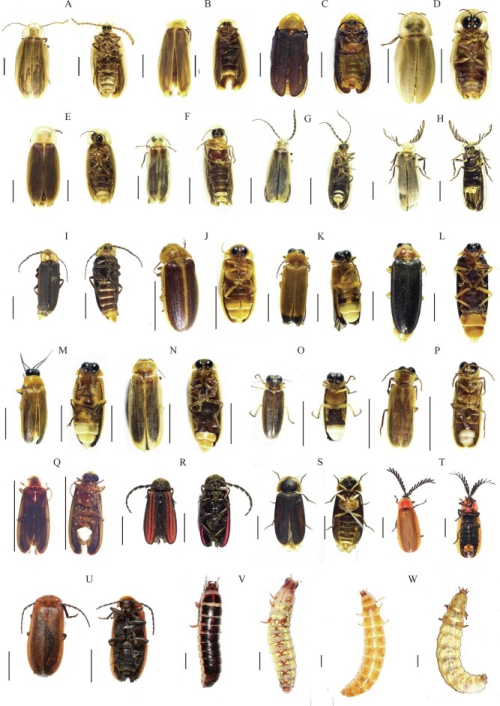Bioluminescence, used as both an aposematic function and in sexual communication, is one of the most interesting phenomena in evolutionary biology. Fireflies are one of the best-known examples of luminescent organisms. The limited geographic distribution and rarity of some firefly genera have hindered molecular phylogenetic analysis, resulting in uncertainty in regard to firefly phylogeny.
In a study published in Molecular Phylogenetics and Evolution, researchers reported 22 mitogenomes and 22 nuclear rDNA repeat unit of Asian fireflies for the first time. Their firefly phylogeny clarified position of 10 Asian firefly genera. The phylogenies recovered the monophyly of each of the three luminous families ((Lampyridae, Rhagophthalmidae, and Phengodidae).
The study was completed by researchers from Xishuangbanna Tropical Botanical Garden (XTBG) and Kunming Institute of Zoology (KIZ).
Using genome skimming next-generation sequencing, the researchers assembled mitogenomes and nuclear rDNA from 23 Asian firefly species (Lampyridae: 22 species in 14 genera from four subfamilies; Rhagophthalmidae: one Menghuoiusspecies).
Combining these Asian firefly species with those previously deposited in GenBank and then using different species groups, they explored the phylogenetic relationships among Elateroidea families, with emphasis on subfamilies and genera in Lampyridae.
The researchers also clarified the phylogenetic signal distribution by selection of different coding regions and further inferred the evolutionary pattern of adult bioluminescence based on the new phylogenies.
The results showed that taxon and gene selection greatly influenced the topology of the phylogenetic trees. The five variable genes (mainly NADH dehydrogenase genes) had little influence on the phylogenetic tree as most genes shared a similar evolution, which enabled recovery of the phylogenetic relationships.
“Our results demonstrated that the common ancestor of Lampyridae possessed the bioluminescent trait, with nine loss events occurring over the evolutionary process”, said Prof. PENG Yanqiong, co-correspondence author of the study.
Contact
PENG Yanqiong Ph.D Principal Investigator
Key Laboratory of Tropical Forest Ecology, Xishuangbanna Tropical Botanical Garden, Chinese Academy of Sciences, Mengla, Yunnan 666303, China
E-mail: pengyq@xtbg.ac.cn

Fireflies (Image by XTBG)

